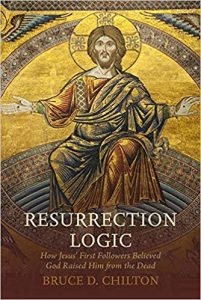O artigo
The Logic of Jesus’ Resurrection – By Bruce Chilton – The Bible and Interpretation: October 2019
A apresentação convencional da ressurreição [túmulo vazio] tornou-se tão comum que precisa ser mencionada para ser deixada de lado, porque se opõe ao fato de que “o túmulo vazio” é uma tradição tardia entre as várias tradições sobre como Deus ressuscitou Jesus dos mortos. Segundo os textos do Novo Testamento, a ressurreição foi concebida como corpórea pelos discípulos de Jesus, mas eles afirmaram isto de modos diferentes e nem sempre conceberam seu corpo de maneira física.
The conventional presentation [empty tomb] has become so prevalent that it needs to be mentioned in order to be set aside because it flies in the face of the fact that “the empty tomb” is a latecomer to the traditions regarding how God raised Jesus from the dead. The resurrection was conceived of as bodily by Jesus’ disciples, but they did not all assert a single origin story, nor did they always conceive of his body in a physical way.
O livro
CHILTON, B. D. Resurrection Logic: How Jesus’ First Followers Believed God Raised Him from the Dead. Waco, TX: Baylor University Press, 2019, 319 p. – ISBN 9781481310635.
Bruce Chilton investigates the Easter event of Jesus in Resurrection Logic. He undertakes his close reading of the New Testament texts without privileging the exact nature of the resurrection, but rather begins by situating his study of the resurrection in the context of Sumerian, Egyptian, Greek, and Syrian conceptions of the afterlife. He then identifies Jewish monotheistic affirmations of bodily resurrection in the Second Temple period as the most immediate context for early Christian claims. Chilton surveys first-generation accounts of Jesus’ resurrection and finds a pluriform–and even at times seemingly contradictory–range of testimony from Jesus’ first followers. This diversity, as Chilton demonstrates, prompted early Christianity to interpret the resurrection traditions by means of prophecy and coordinated narrative. In the end, Chilton points to how the differing conceptions of the ways that God governs the world produced distinct understandings–or “sciences”–of the Easter event. Each understanding contained its own internal logic, which contributed to the collective witness of the early church handed down through the canonical text. In doing so, Chilton reveals the full tapestry of perspectives held together by the common-thread confession of Jesus’ ongoing life and victory over death.
investigates the Easter event of Jesus in Resurrection Logic. He undertakes his close reading of the New Testament texts without privileging the exact nature of the resurrection, but rather begins by situating his study of the resurrection in the context of Sumerian, Egyptian, Greek, and Syrian conceptions of the afterlife. He then identifies Jewish monotheistic affirmations of bodily resurrection in the Second Temple period as the most immediate context for early Christian claims. Chilton surveys first-generation accounts of Jesus’ resurrection and finds a pluriform–and even at times seemingly contradictory–range of testimony from Jesus’ first followers. This diversity, as Chilton demonstrates, prompted early Christianity to interpret the resurrection traditions by means of prophecy and coordinated narrative. In the end, Chilton points to how the differing conceptions of the ways that God governs the world produced distinct understandings–or “sciences”–of the Easter event. Each understanding contained its own internal logic, which contributed to the collective witness of the early church handed down through the canonical text. In doing so, Chilton reveals the full tapestry of perspectives held together by the common-thread confession of Jesus’ ongoing life and victory over death.
